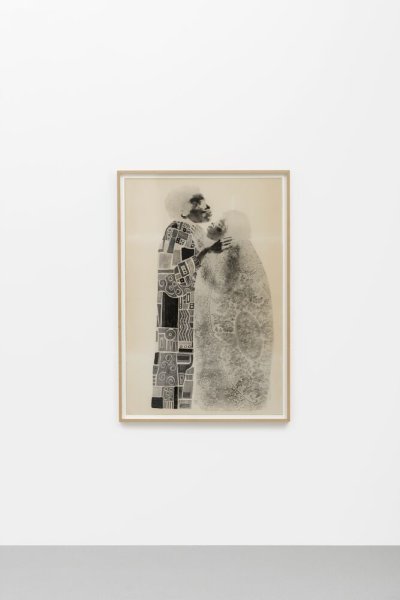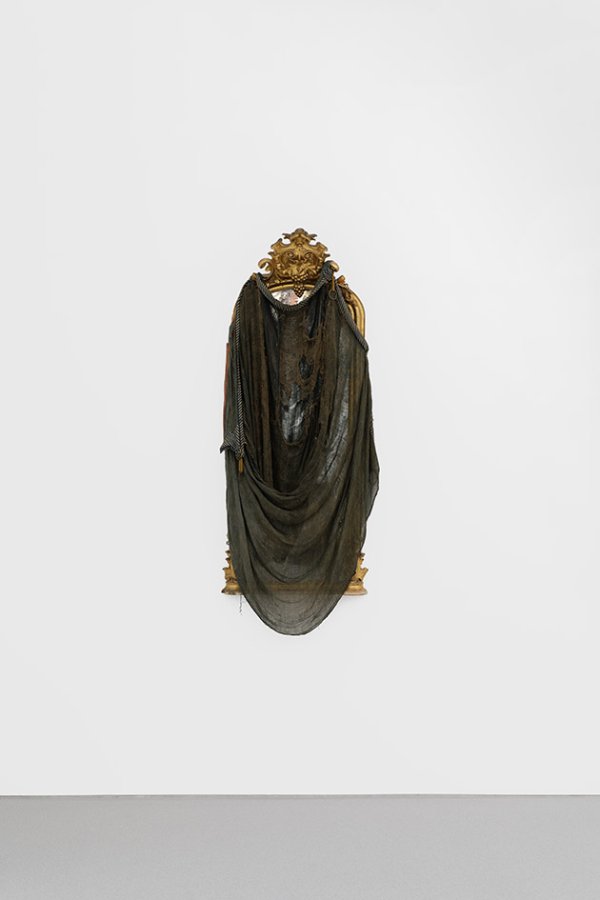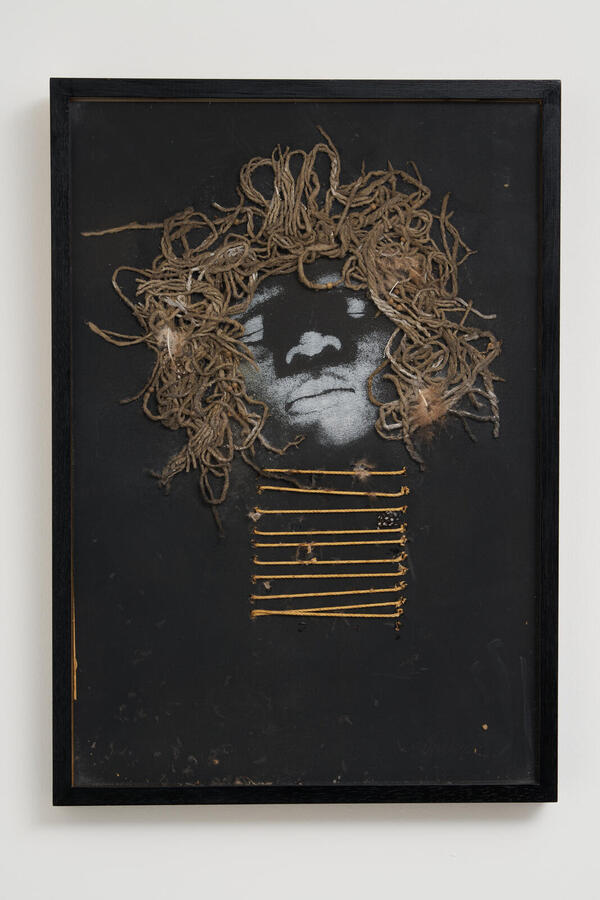Untitled (The Embrace)
Pigment and oil, graphite, charcoal on paper, mounted on an illustration board
154.3 × 103.5 cm (60 3/4 × 40 3/4 in.)
Two embracing bodies, two black figures—a rereading of the famous Kiss, an icon of the Viennese Secession, an emblematic painting of 1907–8 by the painter Gustav Klimt—have left their translucent imprint on the paper, made up of pigments and charcoal. These figures are like “apparitions,” they resemble X-ray images or photographic negatives, punctuated with precise and ornamental details: skin, hair, clothes, decorative motifs.
This work is emblematic of the practice of the American artist David Hammons and is part of the series of Body Prints which greatly contributed to his fame from the end of the 1960s. It can be read through the prism of Ralph Ellison's novel The Invisible Man (1952), which spoke of the difficulty for the Black man to exist within American society. David Hammons draws on both his African-American identity and his knowledge of art history. He intimately links his creative process to a spirituality that is essential to his artistic practice: “I feel that my work refers to my environment in its entirety—to my state as a black human being, politically, and socially.”
This work was presented for the first time by the Pinault Collection in the inaugural exhibition at the Bourse de Commerce, entitled "Ouverture".






























